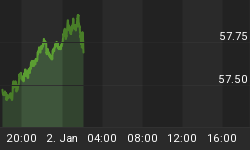During the mating season, the male Iberian emerald lizard changes color from the neck up. This transformation from green to turquoise is a double-edged sword for this tiny reptile. On the one hand, the male lizard's vibrant colored-headdress gives him a leg up when trying to attract female lizards, but on the other hand, his loss of camouflage amidst the green woodlands of Spain and Portugal makes it easier for birds of prey roaming the skies from above to spot him.

Through the evolutionary process of self-selection, nature took care of this potentially dangerous facial makeover. In order to avoid detection, the lizard's head reflects light differently depending on the angle of observation. From the perspective of a bird's-eye view, the emerald lizard still maintains its greenish camouflage, providing protection from predators flying above it in search of their next meal. From the vantage point of a female lizard positioned directly in front of it, the male's bright colored shade of turquoise is still visible. This keeps the female interested in the male as the woodland creatures go about their mating ritual.
Depending on the viewpoint, Benjamin Graham's value-investing criterion for the enterprising investor faces a similar dichotomy. From a bird's-eye view, this stock-filtering criterion's superior performance can at times be concealed from its true potential. One of the selection filters Graham advocated for enterprising investors is to purchase stocks trading below liquidation value. The calculation involves subtracting all liabilities and preferred stock from a company's current assets. All of these data are readily available on a company's balance sheet reported to the SEC on a quarterly basis. If the stock price is trading below this conservative measure of liquidation value, it can be purchased at a significant margin of safety. Intuitively, this strategy seems attractive, but there are times when Graham's deep-value criterion will leave you wanting.
The chart below shows the best one-, five-, and 10-year holding periods of the S&P500 Index over the study period of 1950-2009. In those select time periods when the S&P500 shined oh so brightly, Graham's criterion for enterprising investors had underperformed the broad market index.

* No more than ten percent was invested in any one stock trading below liquidation value, and all the stocks were held for exactly one year. If few stocks could be found, the balance remained idle in a money market fund.
During those euphoric time periods when the stock market was firing on all cylinders, Graham's criterion for the enterprising investor not only underperformed the market but worsened as the holding period was extended. During the past 60 years, the best five-year holding period of an index fund had outperformed Graham's value criterion by more than 5 percent. The best 10-year holding period for a stock index fund had clobbered Graham's deep-value criterion by close to 8 percent. For individuals who have a bent toward value investing, those long stretches of disappointing results might challenge the patience of investors committed to Graham's original teachings.
For holding periods where the broad stock market average is on a roll, an investor who pours more cash into a low-cost index fund recommended by his or her robo-advisor might feel invincible. Let's change the viewing angle of Graham's enterprising approach to value investing and see if things appear a little different. Sharing the same viewing angle with a female Iberian emerald lizard who is staring directly at her male counterpart sporting a fancy headdress might increase the attraction level for investors committed to value investing.

* No more than ten percent was invested in any one stock trading below liquidation value, and all the stocks were held for exactly one year. If few stocks could be found, the balance remained idle in a money market fund.
By only focusing on the best-performing holding period(s) of the S&P500, the superior long-term performance of purchasing stocks trading below liquidation value is concealed. If one takes into account all holding period(s) and not just ones where an index fund towers above the rest, the picture changes. Including dividend income and transaction fees in all of the calculations, the chart clearly shows that stocks trading below liquidation value had outperformed an index fund over the long haul. This value thesis holds true even if investors had to sit on the sidelines in some years, waiting patiently until more stocks could be found to meet Graham's stringent stock selection criterion.
Beauty is in the eye of the beholder not only for Iberian emerald lizards but also for value investors. Seeing the merits of value investing requires a longer-term perspective, blocking out temporary distractions when an index fund holds a full dance card of pretty clients and lots of cash.















